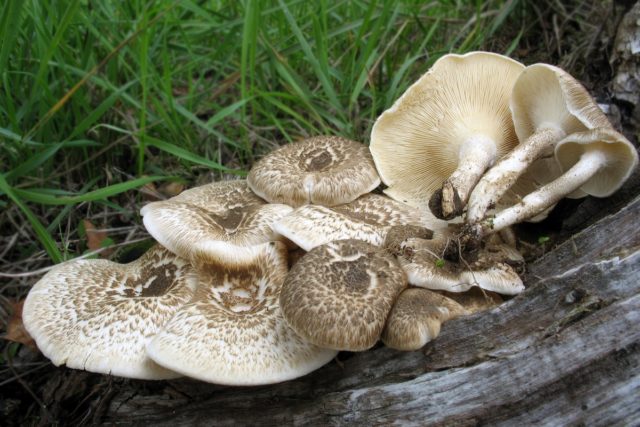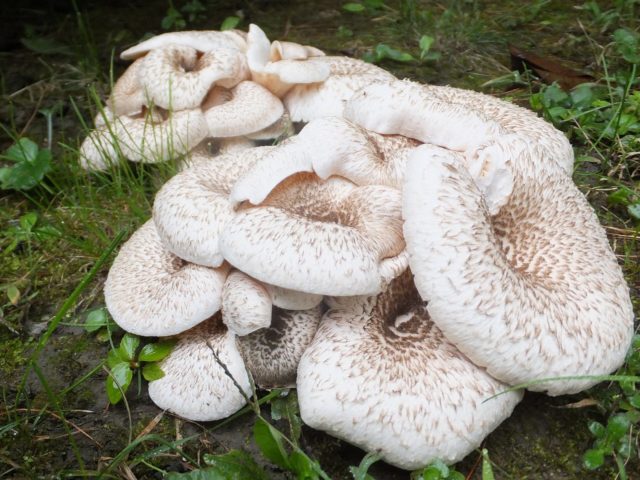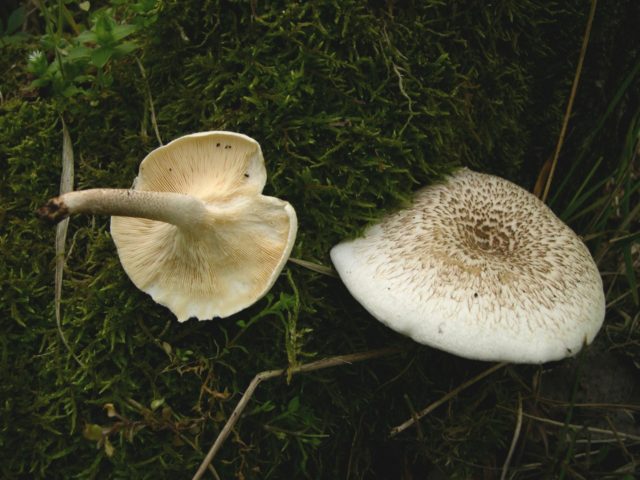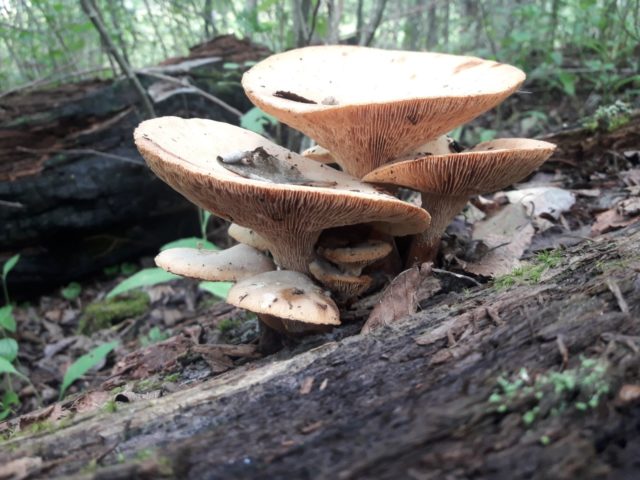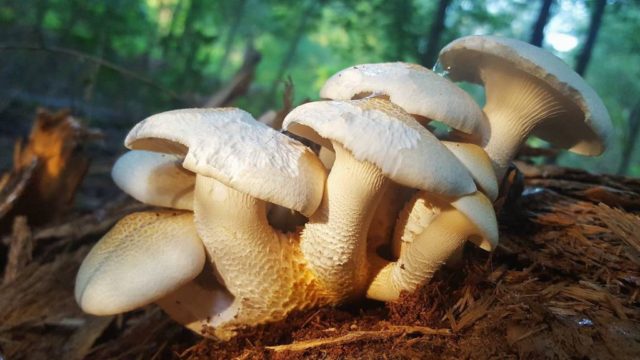Content
Tiger saw-leaf is a conditionally edible representative of the Polyporov family. This species is considered wood-destroying, forms white rot on the trunks. Grows on rotten and felled deciduous wood, bears fruit in May and November. Since the species has inedible cousins, you need to familiarize yourself with the external description, view photos and videos before collecting.
Description tiger saw-leaf
Tiger saw-leaf is a saprophyte that decomposes dead wood. It belongs to the conditionally edible representatives of the mushroom kingdom, but it is important not to make a mistake during mushroom hunting due to the presence of similar species in it.
Description of the hat
The cap of the tiger saw-leaf is convex, as it grows, it acquires the shape of a funnel, and the edges are tucked inward. The dry surface, up to 10 cm in diameter, is covered with a dirty whitish skin with dark brown scales. The spore layer is formed by thin narrow plates that have a dense film. Their edges are serrated, the color varies from cream to coffee. The pulp is dense and soft, with mechanical damage it acquires a reddish tint. As it grows, the film breaks through and descends in a ring onto the stem.
Leg description
Smooth or slightly curved leg grows up to 8 cm. The surface is white, covered with numerous dark scales. The pulp is dense, fibrous, with a pronounced mushroom taste and aroma.
Where and how it grows
Tiger sawfoot is considered a forest orderly, as it settles on dry, rotting wood. As a result, the tree decomposes, turns into humus, thereby enriching the soil with useful microelements. It starts bearing fruit 2 times a season: the first wave appears in May, the second - at the end of October. Tiger saw-leaf is widespread throughout Russia, it can be found in large families in parks, squares, along roads, where deciduous trees were cut down.
Is the mushroom edible or not
This representative of the mushroom kingdom is considered conditionally edible, but since the tiger polyleaf is little known, it has few fans. Only the caps of young specimens are used for food, since in old mushrooms the fruit body is hard, unsuitable for consumption. After a long boiling, the harvested crop can be fried, stewed or harvested for the winter.
When going into the forest, you need to know the rules of collection:
- mushroom hunting can be carried out far from roads;
- collect on a clear day and in the morning;
- the cut is made with a sharp knife;
- if the mushroom is twisted, it is necessary to sprinkle the place of growth with soil, deciduous or woody substrate;
- immediately process the harvested crop.
Doubles and their differences
Tiger saw-leaf, like any forest dweller, has its edible and inedible counterparts. These include:
- Goblet - an inedible, but not poisonous specimen, with a large cap, reddish-cream in color. In adult representatives, the surface fades and becomes whitish.The shape changes from hemispherical to funnel-shaped. The pulp is elastic, firm, exudes a delicate fruity aroma. They prefer to grow dry, but they can also parasitize living wood, infecting the tree with white rot. It grows in large numbers in regions with a warm climate. Since this forest dweller fell in love with rodents, he does not have time to grow old.
- Scaly - belongs to the 4th group of edibility. After heat treatment, the harvested crop can be fried, cooked and canned. It can be recognized by a light gray or light brown cap and a thick, dense leg. The surface is dry, covered with dark scales. The pulp is light, with a pleasant mushroom aroma. Prefers to grow on stumps and dry conifers. It can also be seen on telegraph poles and sleepers. Grows singly or in small groups. Fruiting occurs from July to September.
Conclusion
Tiger saw-leaf is a conditionally edible representative of the mushroom kingdom. Only the caps of young specimens are used for food. The fungus can be found on decaying wood from May until the first frost. Experienced mushroom pickers advise passing by unknown species, since inedible and poisonous can cause irreparable harm to the body.
